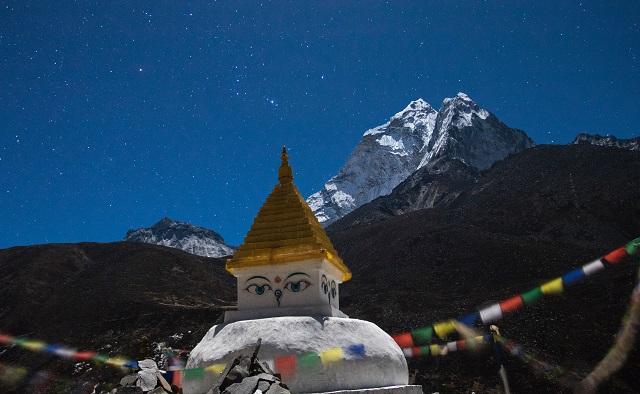
Asia’s future is inextricably tied to the Himalayas, the world’s tallest mountain range and the source of the water-stressed continent’s major river systems. Yet reckless national projects are straining the region’s fragile ecosystems, resulting in a mounting security threat that extends beyond Asia.
With elevations rising dramatically from less than 500 metres to over 8,000 metres, the Himalayas are home to ecosystems ranging from high-altitude alluvial grasslands and subtropical broadleaf forests to conifer forests and alpine meadows. Stretching from Myanmar to the Hindu Kush watershed of Central Asia, the Himalayas play a central role in driving Asia’s hydrological cycle and weather and climate patterns, including triggering the annual summer monsoons. Its 18,000 high-altitude glaciers store massive amounts of fresh water and serve in winter as the world’s second-largest heat sink after Antarctica, thus helping to moderate the global climate. In summer, however, the Himalayas turn into a heat source that draws the monsoonal currents from the oceans into the Asian hinterland.
The Himalayas are now subject to accelerated glacial thaw, climatic instability and biodiversity loss. Five rivers originating on the Great Himalayan Massif—the Yangtze, the Indus, the Mekong, the Salween and the Ganges—rank among the world’s 10 most endangered rivers.
From large-scale dam construction to the unbridled exploitation of natural resources, human activity is clearly to blame for these potentially devastating changes to the Himalayan ecosystems. While all the countries in the region are culpable to some extent, none is doing as much harm as China.
Unconstrained by the kinds of grassroots activism seen in, say, democratic India, China has used massive, but often opaque, construction projects to bend nature to its will and trumpet its rise as a great power. This includes a globally unmatched inter-river and inter-basin water-transfer infrastructure with the capacity to move over 10 billion cubic metres of water through 16,000 kilometres of canals.
China’s reengineering of natural river flows through damming—one-fifth of the country’s rivers now have less water flowing through them each year than is diverted to reservoirs—has already degraded riparian ecosystems and caused 350 large lakes to disappear. With these water-diverting projects increasingly focused on international, rather than internal, rivers—in particular, those in the Tibetan Plateau, which covers nearly three-quarters of the Himalayan glacier area—the environmental threat extends far beyond China’s borders.
And dams are just the beginning. The Tibetan Plateau is also the subject of Chinese geo-engineering experiments, which aim to induce rain in its arid north and northwest. (Rain in Tibet is concentrated in its Himalayan region.) Such activities threaten to suck moisture from other regions, potentially affecting Asia’s monsoons. Ominously, such experiments are an extension of the Chinese military’s weather-modification program.
Moreover, as if to substantiate the Chinese name for Tibet, Xizang (Western Treasure Land), China is draining mineral resources from this ecologically fragile but resource-rich plateau, without regard for the consequences. Already, copper-mine tailings are polluting waters in a Himalayan region sacred to Tibetans, which they call Pemako (Hidden Lotus Land), where the world’s highest-altitude major river, the Brahmaputra (Yarlung Tsangpo to Tibetans), curves around the Himalayas before entering India.
Last fall, the once-pristine Siang—the Brahmaputra’s main artery—suddenly turned blackish grey as it entered India, potentially because of China’s upstream tunnelling, mining or damming activity. The Chinese government claimed that an earthquake that struck southeastern Tibet in mid-November ‘might have led to the turbidity’ in the river waters. But the water had become unfit for human consumption long before the quake.
In any case, China is not letting up. It has, for example, eagerly launched large-scale operations to mine precious minerals like gold and silver in a disputed area of the eastern Himalayas that it seized from India in a 1959 armed clash.
Meanwhile, China’s bottled-water industry—the world’s largest—is siphoning ‘premium drinking water’ from the Himalayas’ already-stressed glaciers, particularly those in the eastern Himalayas, where accelerated melting of snow and ice fields is already conspicuous. Unsurprisingly, this is causing biodiversity loss and impairment of ecosystem services.
Across the Himalayas, scientists report large-scale deforestation, high rates of loss of genetic variability, and species extinction in the highlands. The Tibetan Plateau, for its part, is warming at almost three times the average global rate. This holds environmental implications that extend far beyond Asia.
The towering Himalayan Highlands, particularly Tibet, influence the northern hemisphere’s atmospheric-circulation system, which helps to transport warm air from the equator towards the poles, sustaining a variety of climate zones along the way. In other words, Himalayan ecosystem impairment will likely affect European and North American climatic patterns.
Halting rampant environmental degradation in the Himalayas is now urgent, and it is possible only through cooperation among all members of the Himalayan basin community, from the lower Mekong River region and China to the countries of southern Asia. To bring about such cooperation, however, the entire international community will have to apply pressure to rein in China’s reckless environmental impairment, which is by far the greatest source of risk.